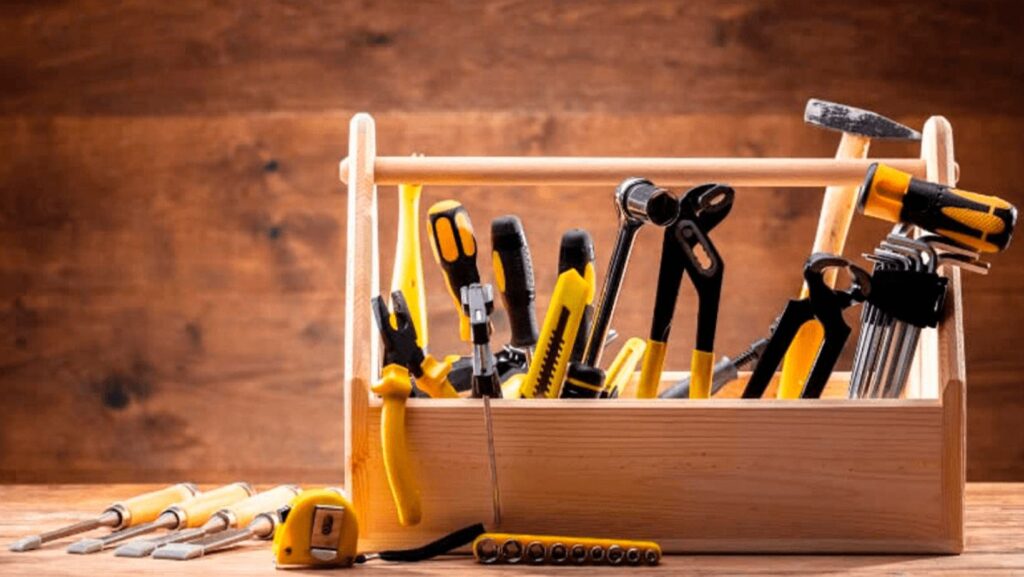When it comes to DIY home repairs, preparation is everything. Whether you’re fixing a leaky faucet, hanging a picture frame, or assembling furniture, having the right tools at hand can make all the difference. That’s where an all-around toolbox comes in—a collection of essential tools that covers a wide range of household tasks. This article will guide you through how to build and maintain a versatile toolbox that ensures you’re always ready for any home repair job.
Contents
Table of Contents
ToggleUnderstanding the Essentials of a Toolbox
A well-stocked toolbox is more than just a box of random tools; it’s an essential part of being a self-reliant homeowner. An all-around toolbox provides versatility, enabling you to tackle a wide array of common home repairs without the frustration of lacking the right tools. Whether you’re performing basic maintenance or making small improvements, having the proper tools at your disposal saves you time, money, and trips to the hardware store. It also enhances safety, as using improper or makeshift tools can lead to injuries or damage to your home.
At its core, a functional toolbox includes tools that offer the maximum range of utility. These tools should cover basic hand tasks, minor electrical repairs, woodworking, and even plumbing fixes. In addition to hand and power tools, it’s essential to include hardware such as fasteners, nails, and screws. For instance, self tapping screws are particularly useful for projects that involve drilling into metal or plastic, as they eliminate the need for pre-drilling and provide a secure hold.
Choosing the Right Toolbox
When deciding on a toolbox, the first consideration is the type that suits your needs. Hard-sided toolboxes made of plastic or metal are sturdy and durable, making them a good option if your tools are likely to take a beating. Soft-sided tool bags, made from heavy-duty fabric, are more flexible and lighter, making them easier to carry, especially if you move from room to room frequently.

The size and capacity of the toolbox are also important. If you’re just getting started with home repairs, a small to medium-sized box should suffice. However, as your collection of tools grows, you may need a larger option with multiple compartments or trays for better organization. Portability is key, especially for people who don’t have a dedicated workshop or tool storage area.
Organizational features like removable trays, compartments, and dividers help you keep things neat and ensure that tools are easy to find. Nothing is more frustrating than rummaging through a pile of tools to find a single screwdriver. Investing in a toolbox that allows for logical placement and quick access is well worth the cost.
Essential Tools for Every Home Repair Toolbox
A proper DIY toolbox should contain a variety of hand tools that are crucial for home repairs. Screwdrivers, both flathead and Phillips, are indispensable. These come in a range of sizes, so having a set will ensure you’re prepared for a variety of screw types. Pliers are another must-have, and a pair of needle-nose and slip-joint pliers should cover most basic tasks like gripping, cutting, or bending wires and materials.
Wrenches, especially adjustable wrenches, are vital for working on plumbing, furniture assembly, or any task requiring the tightening or loosening of bolts. Socket wrenches are useful for more advanced mechanical work or repairs involving nuts and bolts. A hammer is one of the most frequently used tools. A claw hammer works well for everything from hanging pictures to pulling out nails, while a rubber mallet comes in handy for jobs requiring a gentler touch.
Don’t overlook the importance of a reliable tape measure. Accurate measurements are essential for any task, whether you’re cutting materials or hanging items on the wall. Power tools elevate your home repair capabilities. A cordless drill is perhaps the most important power tool to include, given its versatility in drilling holes, driving screws, and assembling furniture. Jigsaws or circular saws are useful for cutting wood or other materials, while a sander can help finish surfaces and prepare them for painting or staining.
Organization Tips for Your Toolbox
The way you organize your toolbox can save you a lot of time and frustration. Tools should be grouped according to their function.

For example, keep all screwdrivers in one section, wrenches in another, and power tools in a different area. Using dividers or trays can help prevent tools from getting jumbled together, which can be particularly useful for smaller items like screws or nails.
Labeling sections in your toolbox can be extremely helpful, especially when you’re in the middle of a job and need to quickly locate something. If your toolbox has compartments or drawers, you can use labels or color codes to identify where different tools are stored.
Conclusion
A well-packed all-around toolbox is your best ally in DIY home repairs. It offers versatility, efficiency, and the ability to handle a range of household tasks with confidence. By carefully selecting and organizing your tools, you ensure that you’re always ready to fix whatever comes your way. Regular maintenance of your tools and toolbox will extend their life, making home repairs not only possible but enjoyable.

